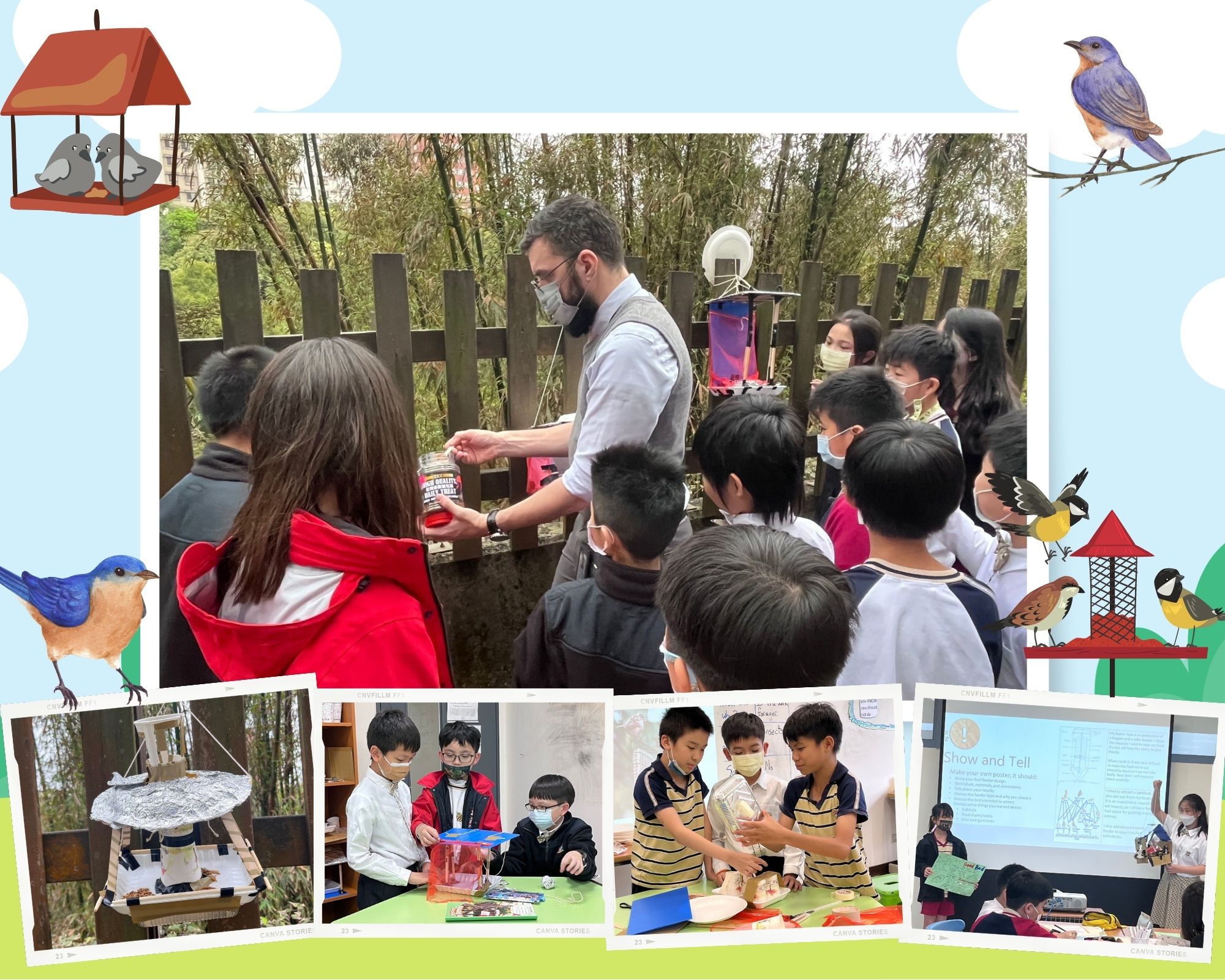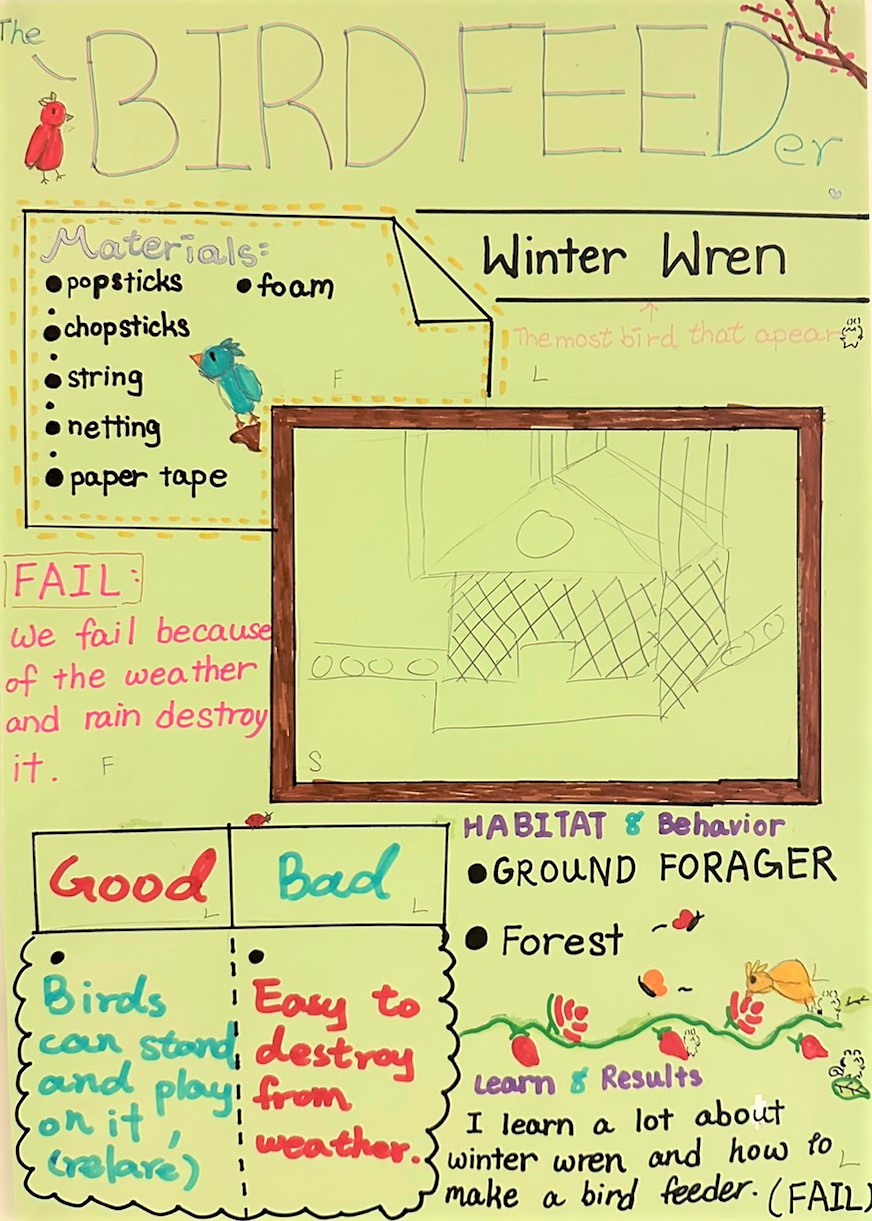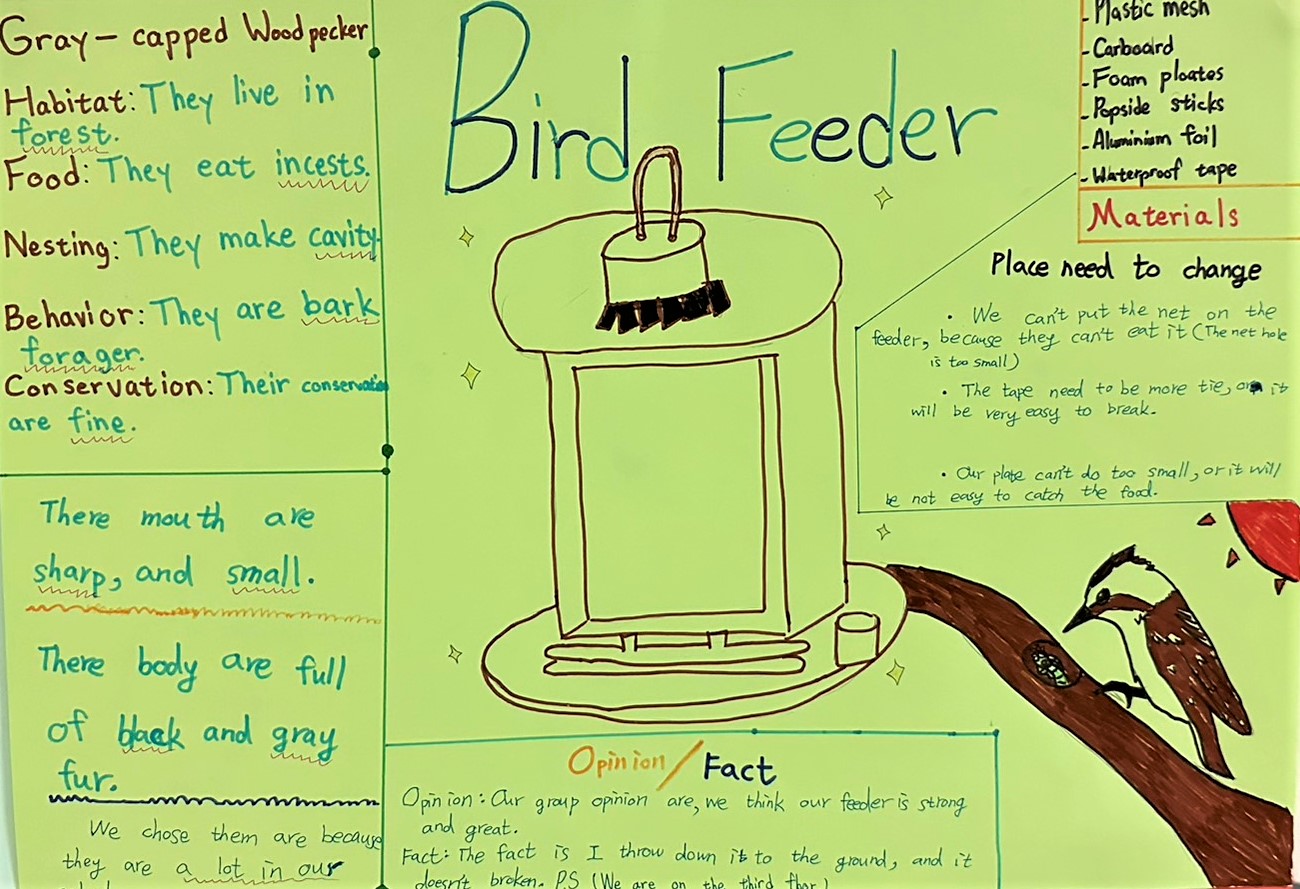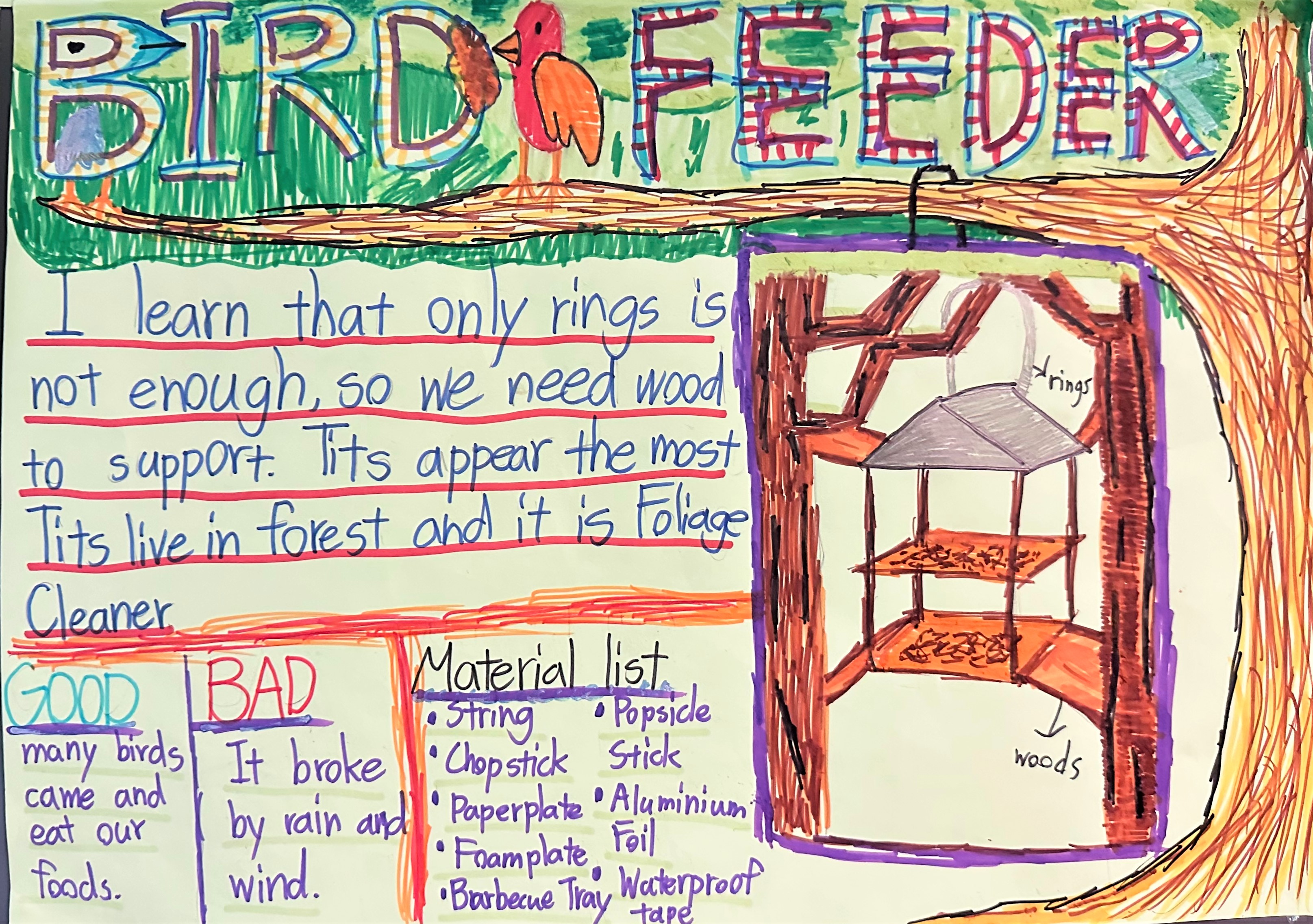

Teaching Coordinator Adriaan Louw
What does life need to sustain itself? This is the basic question that grade 5 students work on during the course of the spring semester. Over the course of two projects, they investigate the various things that make up a robust answer to this question, and try their hand at applying this in practice. This question is too broad by itself, and so it is wrapped up into two guided projects. For the midterm, students build birdfeeders. For the final, they build spirometers.
Midterm: Building a birdfeeder

During the midterm project, this question is practically answered with a real world task. Build a bird feeder that can attract a particular endemic Taiwanese bird to the school. This project not only helps students understand how energy relates to living things, but also how changes in the environment can seriously affect its ability to support life – and that includes the lives of humans.
Leading up to this, students are exposed to the various adaptations and functions of animals in their specific environment, and are also shown how energy moves through habitats. Once they have a good grasp of this background, the next step is to narrow down what they need to know about birds in the area. They identify which birds are already part of the local ecosystem, and then research what characteristics, adaptations, and preferences these birds have. This all guides them to choosing the most appropriate design for their feeder, as well as a suitable location, and food.
Once all this pre-planning is done, students plan, design, and build a bird feeder. They then place it in a location that matches the general feeding preference of whichever bird they chose, and then observe it over time to record what happens. Did they attract their bird? Did other birds come? Did weather destroy everything? All these and many other questions are answered during the week long observation window. This information is shared and used as the basis for improved designs, and once this has been locked in, presentations round off the project.
Final Project: Building a Spirometer

The second project shifts the focus onto the human body. So that students can understand the challenges faced by engineers and scientists when trying to sustain life in hostile environments. During the course of this project, students will answer questions such as which problems space travel poses to living things. Will it be an issue to find resources to stay alive? Food? Water? Oxygen? How does gravity affect things? Does it matter if it isn’t there? These types of questions prompt and probe both student background knowledge and guide them towards where they need to be.
Understanding what life needs as outlined in their first project, highlights many of the challenges life faces in extreme environments, such as that posed by space. It also stimulates discussion about what the value of exploring and building in such a dangerous place might be. All this is aimed at helping students understand that all human technology and exploration is interconnected and able to be applied in other places. Fireproof equipment for firefights was originally designed for astronaut launch suits. Heavy duty air and water purifiers were designed for recycling resources in space and find use in many countries around the world today etc..
With all this background, and to teach students a little more about their own bodies, they build spirometers. The goal of this task is to measure their own breathing volume, and from that to extrapolate two things. First, how much oxygen would they need to take on a two day trip to space, and second, using current launch fees, how much would that cost.This practical process also serves as the vehicle to improve students understanding of their respiratory and circulatory systems, as well as reinforcing the various factors that make life possible.




